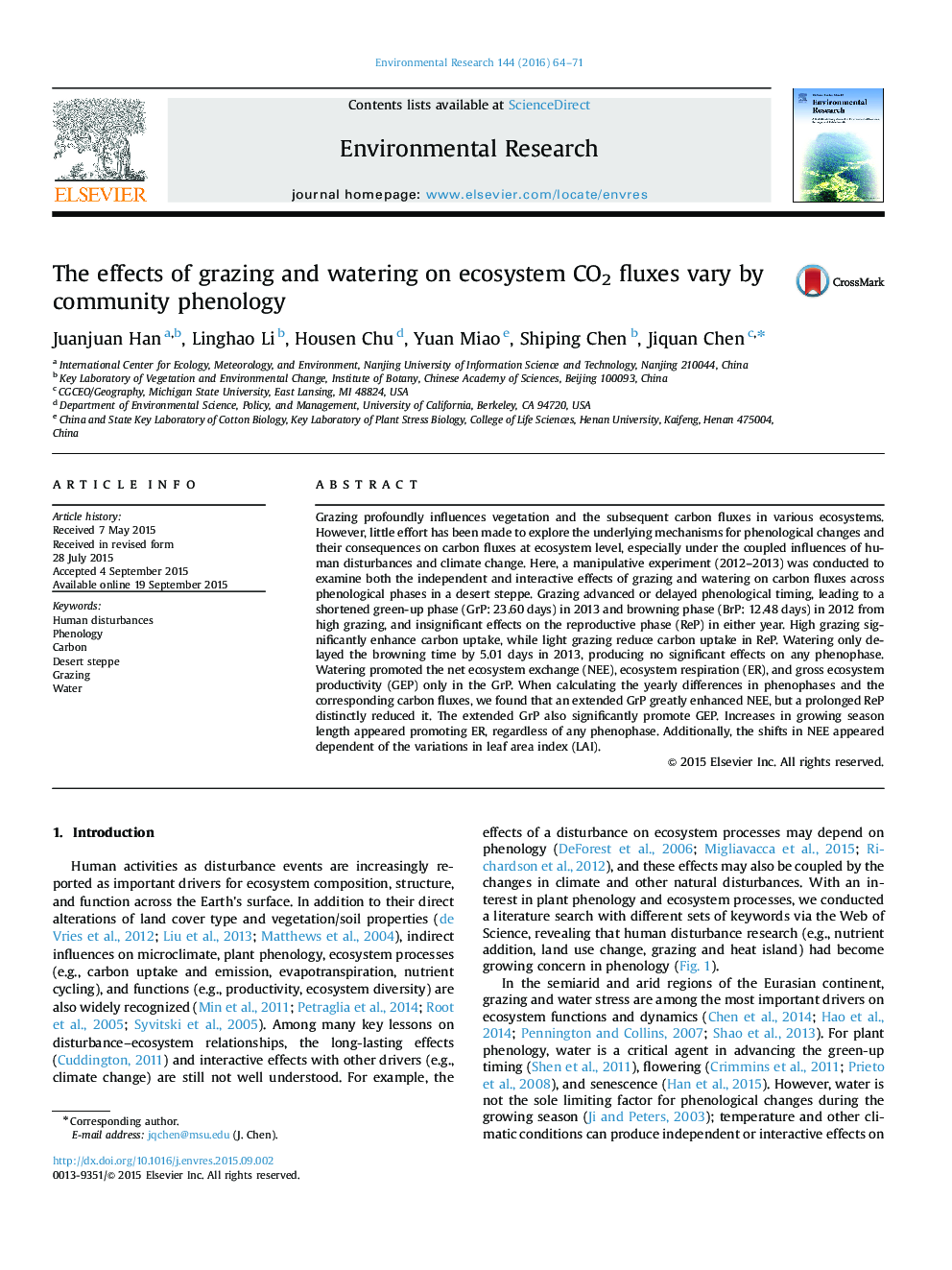| Article ID | Journal | Published Year | Pages | File Type |
|---|---|---|---|---|
| 4469645 | Environmental Research | 2016 | 8 Pages |
•We developed a new method “co-flowering ratio” to connect phenology observations and ecosystem carbon fluxes by scaling the phenology from species to community level.•Grazing had complicate effects on green-up, reproductive and browning timing, leading to a contracted green-up phase (GrP: 23.60 days) in 2013 and browning phase (BrP: 12.48 days) in 2012. Intensive grazing significantly enhance carbon uptake, while light grazing reduce it in reproductive phase (ReP). Watering prolonged the browning time, and have no significant effects on any phenophases. Watering also promoted the NEE, ER, and GEP only in the GrP.•We examined whether the extended growing season enhancing carbon uptake at the region- or biome-scales are still stand at community level. We found that extra green-up phase enhanced the carbon uptake, while prolonged reproductive duration reduced the carbon uptake.•Photosynthetic area (i.e., LAI) is a critical proxy determining the divergent carbon contributions between green-up and reproductive phases.
Grazing profoundly influences vegetation and the subsequent carbon fluxes in various ecosystems. However, little effort has been made to explore the underlying mechanisms for phenological changes and their consequences on carbon fluxes at ecosystem level, especially under the coupled influences of human disturbances and climate change. Here, a manipulative experiment (2012–2013) was conducted to examine both the independent and interactive effects of grazing and watering on carbon fluxes across phenological phases in a desert steppe. Grazing advanced or delayed phenological timing, leading to a shortened green-up phase (GrP: 23.60 days) in 2013 and browning phase (BrP: 12.48 days) in 2012 from high grazing, and insignificant effects on the reproductive phase (ReP) in either year. High grazing significantly enhance carbon uptake, while light grazing reduce carbon uptake in ReP. Watering only delayed the browning time by 5.01 days in 2013, producing no significant effects on any phenophase. Watering promoted the net ecosystem exchange (NEE), ecosystem respiration (ER), and gross ecosystem productivity (GEP) only in the GrP. When calculating the yearly differences in phenophases and the corresponding carbon fluxes, we found that an extended GrP greatly enhanced NEE, but a prolonged ReP distinctly reduced it. The extended GrP also significantly promote GEP. Increases in growing season length appeared promoting ER, regardless of any phenophase. Additionally, the shifts in NEE appeared dependent of the variations in leaf area index (LAI).
